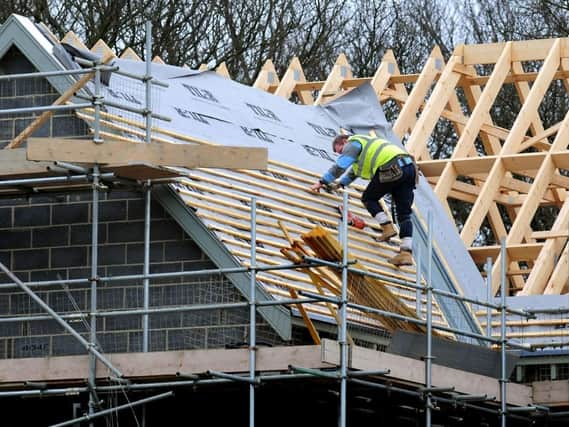Building thousands of homes on Green Belt will not ease affordable housing crisis, countryside charity warns


Analysis by the charity shows that more than three-quarters of the 460,000 homes planned across England on land which would be released from the Green Belt will be unaffordable by government definitions.
Tom Fyans, the CPRE’s director of campaigns and policy, said: “We are being sold a lie by many developers. As they sell off and gobble up the Green Belt to build low-density, unaffordable housing, young families go on struggling to afford a place to live.
Advertisement
Hide AdAdvertisement
Hide Ad“The affordable housing crisis must be addressed with increasing urgency, while acknowledging that far from providing the solution, building on the Green Belt only serves to entrench the issue. The Government is failing in its commitment to protect the Green Belt - it is being eroded at an alarming rate.”
The CPRE’s annual State of the Green Belt report shows that local authorities in Yorkshire currently plan to release Green Belt land to accommodate about 49,000 homes.
Nearly half of these homes are in either Leeds or Bradford, reinforcing the concerns of green-space campaigners that development will contribute to urban sprawl and erode the boundaries between the two cities. The Tong and Fulneck Valley Association is seeking to protect Green Belt land in the Tong Valley between the two cities.
Its chairman, the Rev Canon Gordon Dey, said: “It has been one of the key planks of our campaign all along, the coalescence between Leeds and Bradford and the way the Green Belt is being eroded away. It is a big issue.”
Advertisement
Hide AdAdvertisement
Hide AdLeeds City Council’s executive member for planning, Coun Richard Lewis, said the authority prioritised building on brownfield land and were “firmly committed to ensuring there is no unnecessary loss of Green Belt land in Leeds while meeting future housing need”.
Bradford Council’s executive member for planning, Coun Alex Ross Shaw, said the Bradford district had a growing economy and they had “to plan for building to accommodate that growth”.
The Ministry of Housing, Communities and Local Government said it was introducing new rules to strengthen protections for the Green Belt, meaning councils “may only alter boundaries in exceptional circumstances”.
David O’Leary, the policy director of the Home Builders Federation, said a Green Belt designation had “little to do with ecology or beauty” and included previously developed land, which many would consider suitable for development.
Advertisement
Hide AdAdvertisement
Hide AdHe said: “Hysterical reports about building in the Green Belt do little to raise the level of debate about the country’s housing needs. The reality, as shown by official statistics, is that there is more Green Belt land in England today than there was in 2006.”
Building on the Green Belt is usually heavily restricted but local authorities can apply to the Government to change the boundaries as part of long-term planning blueprints.
There are 10,572 homes planned for land released from the green belt in Leeds and a further 11,000 in Bradford, according to the Campaign to Protect Rural England’s annual State of the Green Belt report.
Nearly 8,000 homes are planned for land released from the Green Belt in Rotherham, 6,100 in Sheffield, 4,600 in Kirklees, 4,000 in Calderdale, 2,706 in York and 2,000 in Barnsley.
Across the country, the number of homes planned on Green Belt land has trebled in the past five years.